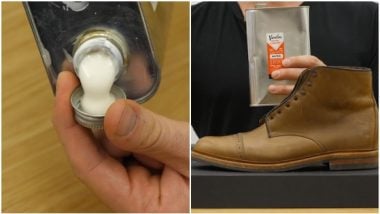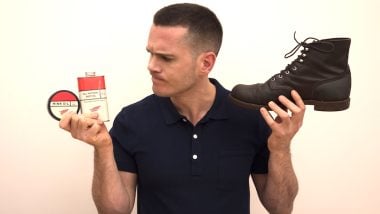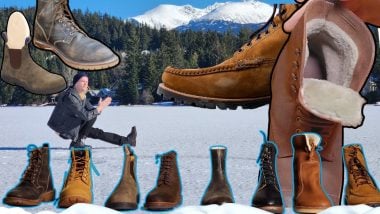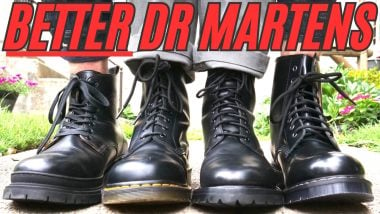The Right Way to Waterproof Nice Boots
If you own a quality pair of shoes and you know what you’re doing, then you make sure you condition the leather every few months. Leather, after all, is skin. Keeping it moist is a critical component of ensuring your boots last a long time, develop a patina, and maintain their lustre and depth of color.
Waterproofing is a trickier beast. There’s a general consensus that just using a conditioner like Venetian Shoe Cream will help to improve a boot’s water resistance. But if you want to take things further, people start to disagree.
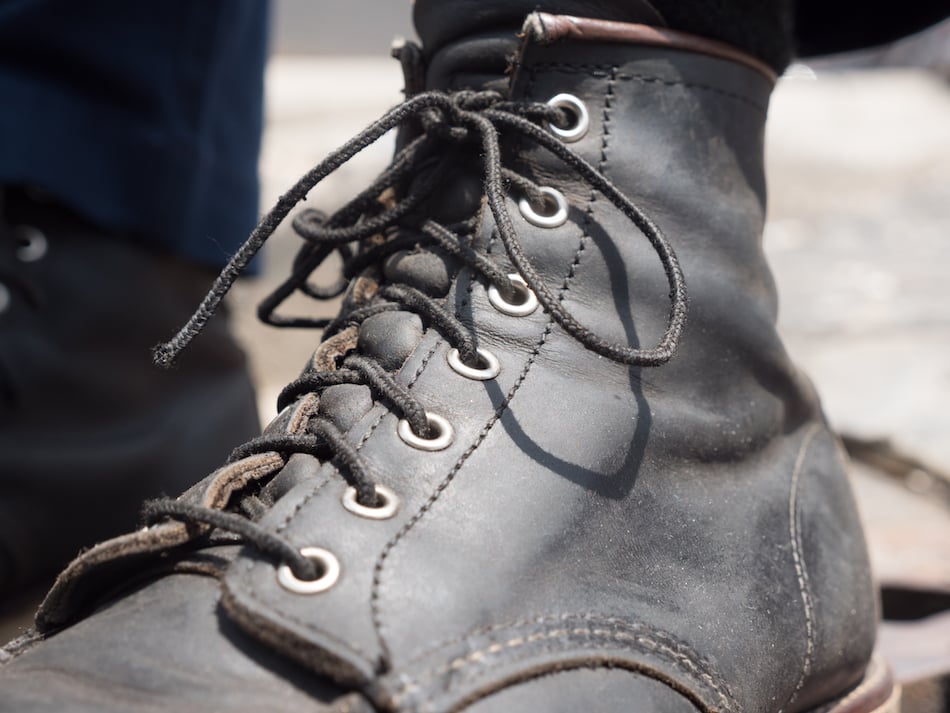
Silicone-Based Waterproofing Sprays
Waterproofing sprays are often a go-to, but that may have some consequences according to Philip Collias, the President of Zoes Manufacturing Co. (That’s the people who make Venetian Shoe Cream, probably the most beloved boot care product on Earth, along with a huge variety of other balms, oils, and care products.)
“What will hurt the leather is silicones and waterproofers,” he says, noting that waterproofing sprays are typically silicone-based. “That adds a coating and it’s very difficult to get off once it’s on because it penetrates into the pores. It does waterproof, but I would recommend not using it unless it’s an absolute last resort.”
You want your leather to be able to breathe, but silicone coats it in an almost impermeable layer that darkens the leather and requires a solvent to get off. It’s not a big deal for cheap shoes you’ll throw out in a week or two, but if you’re spending hundreds of dollars on boots then you may want to think of a more natural approach.
How to Waterproof Nice Boots
To make boots as water resistant as possible you want to start thinking about waxes, but that doesn’t mean you should just put wax straight onto your boot. The idea is to build layers of products.
1) Leather Cleaner
First, you want to clean the shoe to make sure you’re not trapping dirt and impurities under the layers you’re about to apply. Most boots will do just fine with a gentle, natural cleaner like Cobbler’s Choice. If the stains aren’t coming out, consider working with some Saddle Soap — but with caution. It’s very powerful and can strip out dye if you’re not careful — here’s our guide to using Saddle Soap.
An inexpensive cleaner made with all natural ingredients, it's easy to apply and contains tea tree oil for some anti-microbial properties.
2) Paste
Then, you put a thin layer of paste on the leather, and you can add it to the welting as well.
“Dyanshine is a stain polish that also conditions, but our mink oil paste is also a good bet, particularly for the wintertime,” says Collias. “It can be used on its own or in conjunction with other creams for heavier waterproofing. It penetrates deeply but it allows the leather to breathe and conditions it further.”

3) Cream
Let everything dry out in a well-ventilated area, then take a cotton cloth and use it to apply a layer of cream.
Venetian shoe cream is the gold standard. While the precise contents are proprietary (believe me, I wanted answers), Collias says that the product contains six or seven different waxes (among other ingredients), and there are no thickeners or silicone or anything artificial. Basically, the product is a combination of many kinds of waxes each with its own purpose: one moisturizes, one gives more shine, one preserves, and so on.
That final layer of cream will add a soft glow but keep things pretty matte. If you like things shinier, you might consider something like Saphir’s Renovateur. Or…
4) Polish
When we said layers, we meant it! Finishing the cream with some polish, of course, helps to make the boots shinier, but it’s important to note that polishes also have a protective effect and will build up in the leather if you use the polish on a regular basis, like every two to three weeks.
There you have it! Collias uses the same four-layered process on all smooth leathers, whether they’re vegetable-tanned, chrome-tanned, or oil-tanned. Sure, you could spray on silicone like a mook, but if you really care about your boots and want to amp up the moisture and water resistance while preserving and maintaining their appearance, this is your blueprint.




